Re-framing Cardinal Maria Borghese
Posted: 08 Feb 2023 by PML
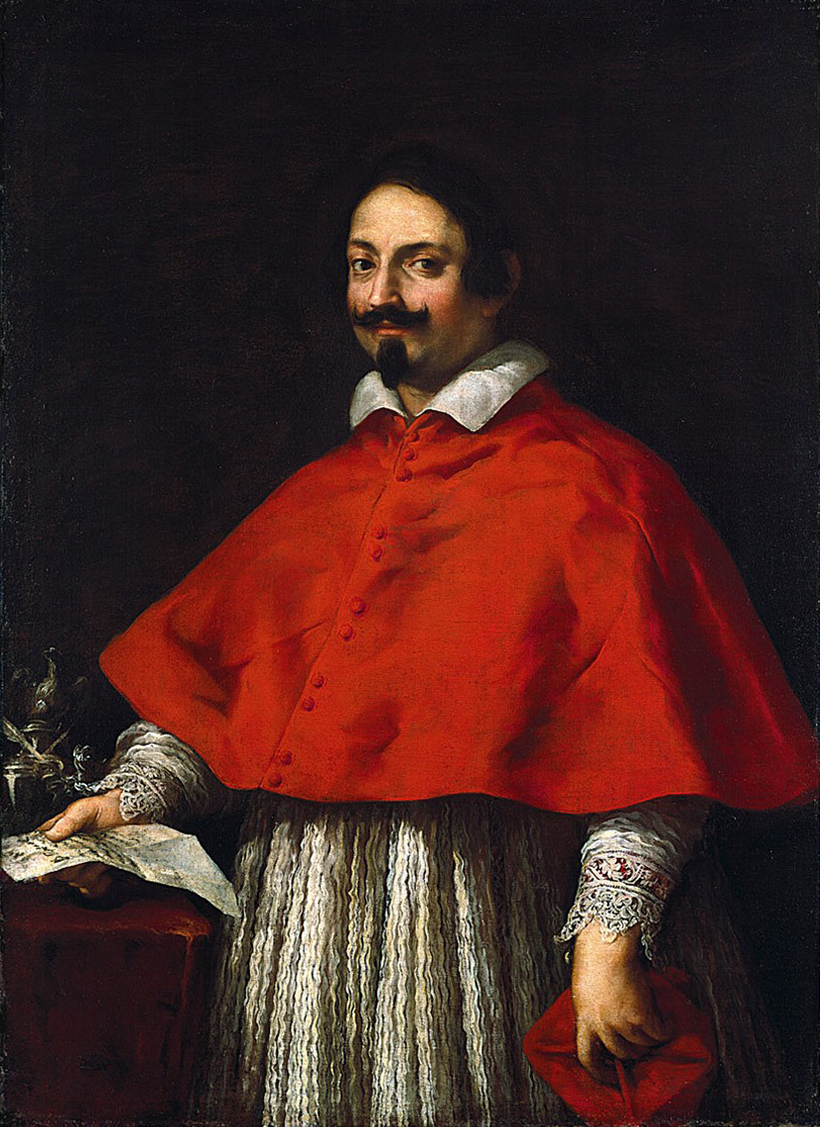
A painting is a window onto another world – of history or of the imagination - and we can only enter this world completely if there is a context to ease us in, and nothing to distract from the welcome of that opening window. This is the territory of the picture frame. Evolving from a protective border around the pictorial surface, it quickly became an intermediate, liminal area between the painting and the wall where it hung – in fact, the whole interior beyond the wall. It was often chosen by the artist him- or her- self, or by the client with the artist’s knowledge and advice. It employed colours and patterns which harmonized with the composition it held, or provided a foil for it, or focused attention on it against a competing background; it sympathized in style with the period of the painting and its nationality. It became, in short, the portable context for the painting, moving with it through time and space.
But if the painting changes hands, the frame often falls victim to the wish of its new owner to bring it up to date, to make it fit in with a contemporary interior, or with other paintings around it; and a reframing of this sort can alter – subtly or radically – the aspect of the whole work of art. Frames also disappear or disintegrate over time, or are just discarded under the misapprehension that they don’t matter.
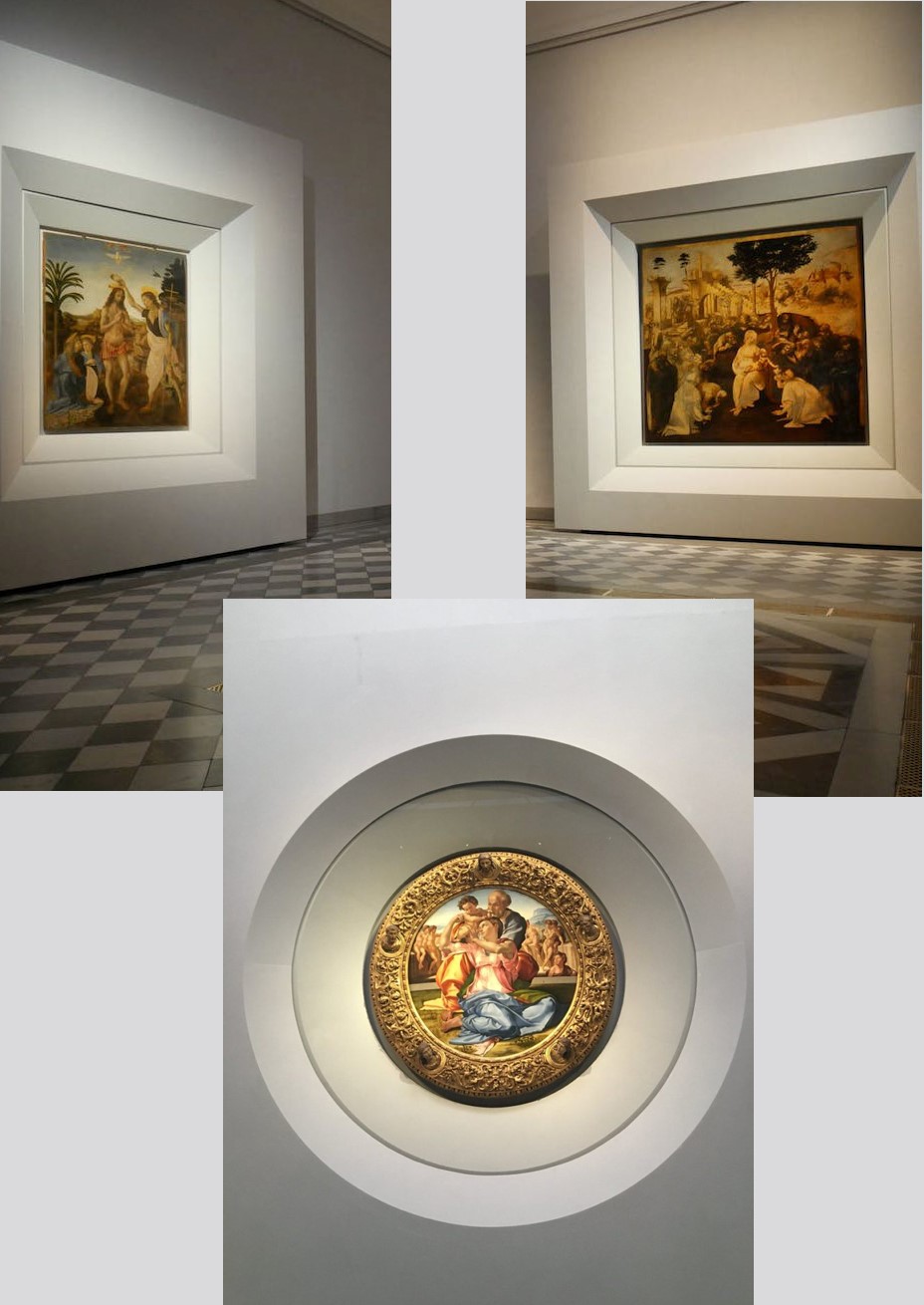
Suddenly the picture has lost its travelling home: the border which insulates it from a strange new world (and some worlds can be very strange indeed...)
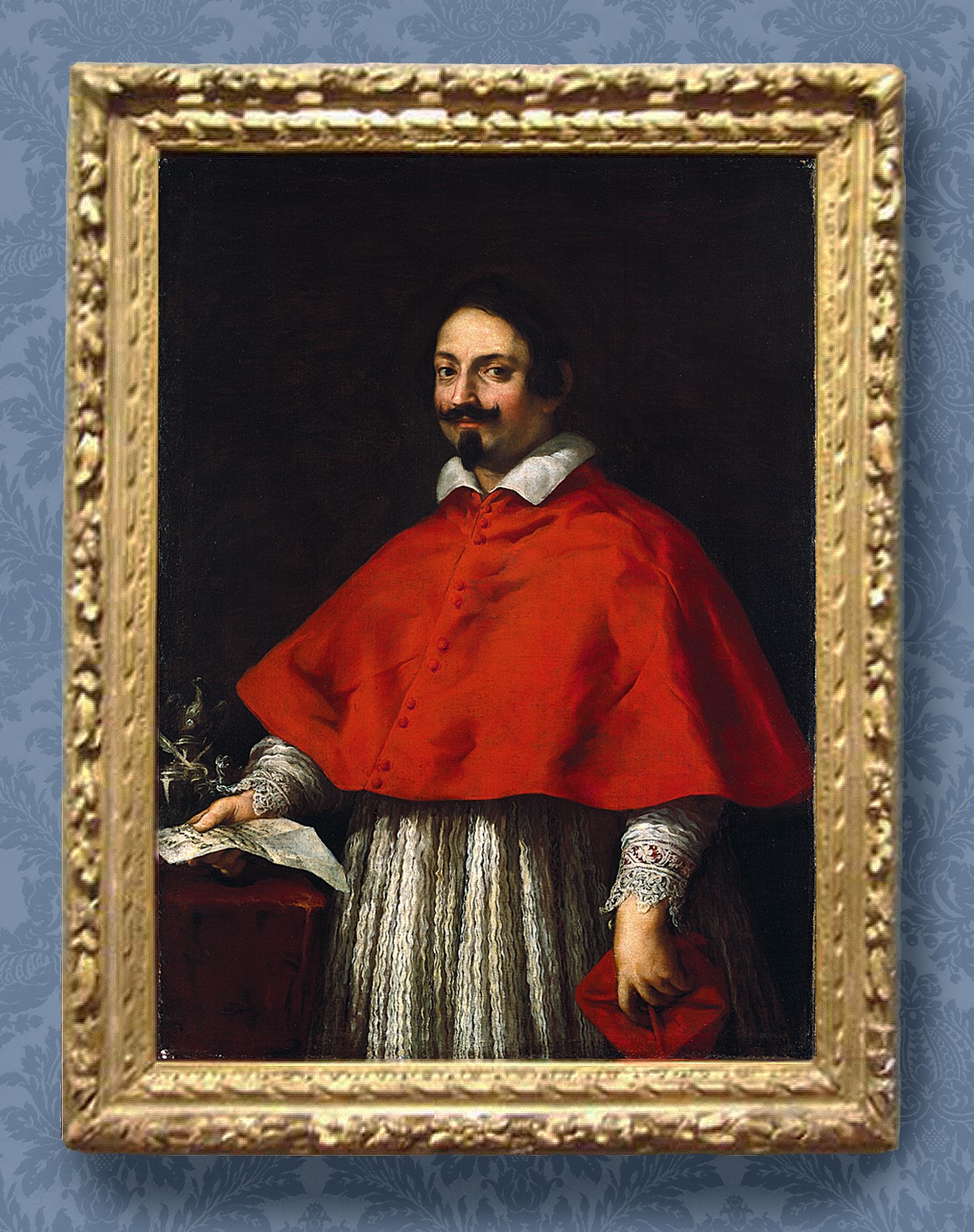
Pietro da Cortona’s magisterial portrait of a cardinal, so much a product of the Roman Baroque, had suffered such a transition from its original 17th century Italian frame into a collector’s French Louis XIII frame, distracting from the clean lines and monumental forms of the composition with ornament which was too organic and fussy.
Choosing a replacement frame is not, however, a simple, unique selection from styles of the right period and location. Whether the painting lives in a museum or a domestic setting, it must harmonize with its interior, and probably with a hang of other paintings and frames. It must enhance the picture subtly, in tune with its environment, as well as with the lines and colours of the image itself.

In this case, the owner was a museum; and so a choice of five frames was offered, each of which would give a slightly different aspect to the way in which the painting was presented. All of them were 17th century Baroque frames – variations upon the cassetta, with a wide-ish frieze surrounded by more or less enriched mouldings, and different forms of decoration on the frieze.
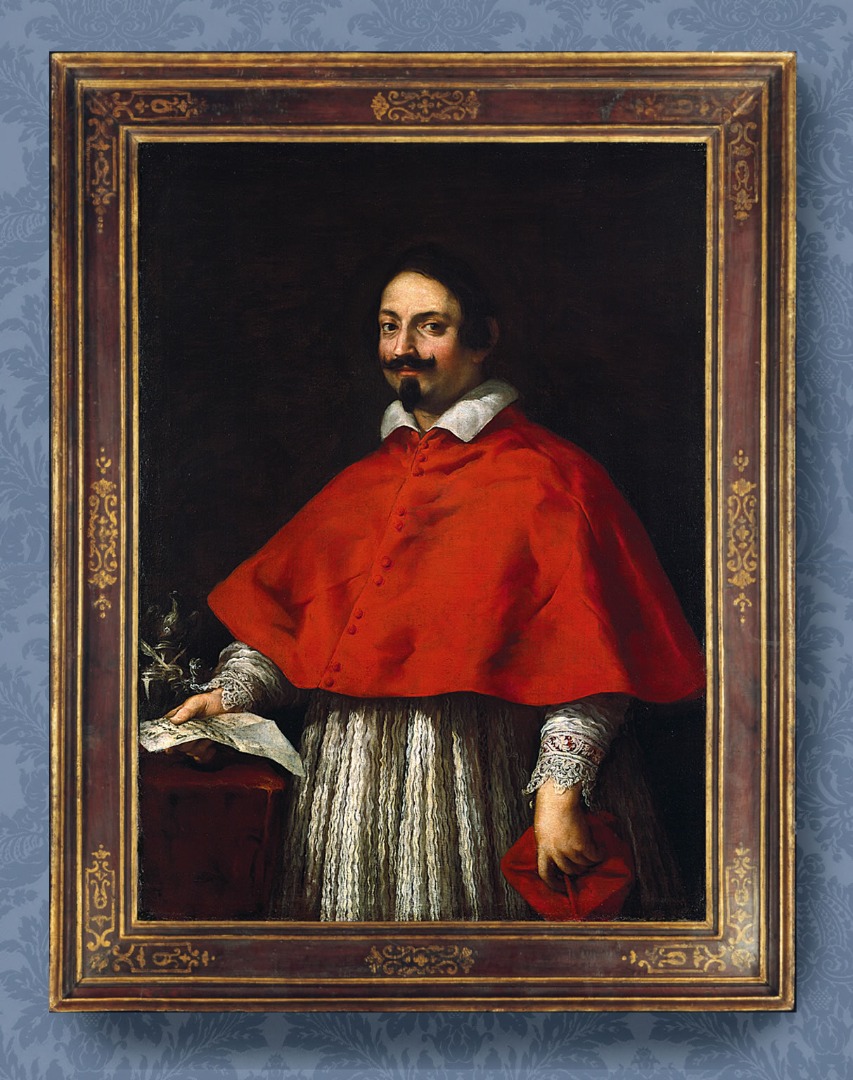
The first example is a parcel-gilt and painted frame, the predominant colour being a deep claret, in a gesture towards the 17th century use of a dark red velvet on the surface of some frames for portraits of cardinals; the frieze is decorated with arabesques in mordant gilding – the whole giving a rich but sober effect.
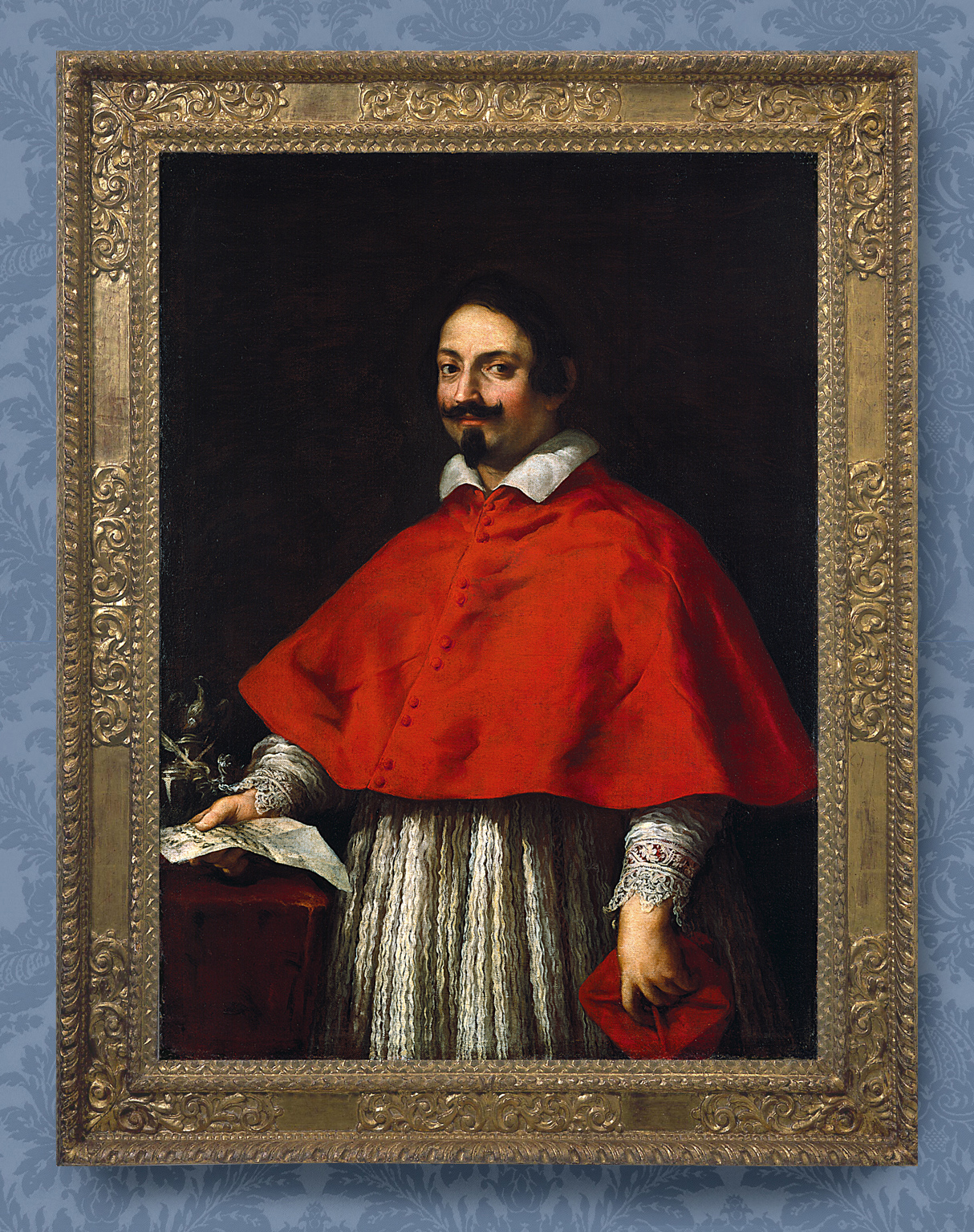
This frame is gilded overall, and enhanced with carved mouldings around the outer (top edge) and inner (sight edge) contours, and with carved corners and centres on the frieze. This could be seen as very similar to the old, discarded frame, yet here the result is much more classical, linear and controlled, giving a subtle shimmer of light and movement rather than a sense of competitive exuberance.
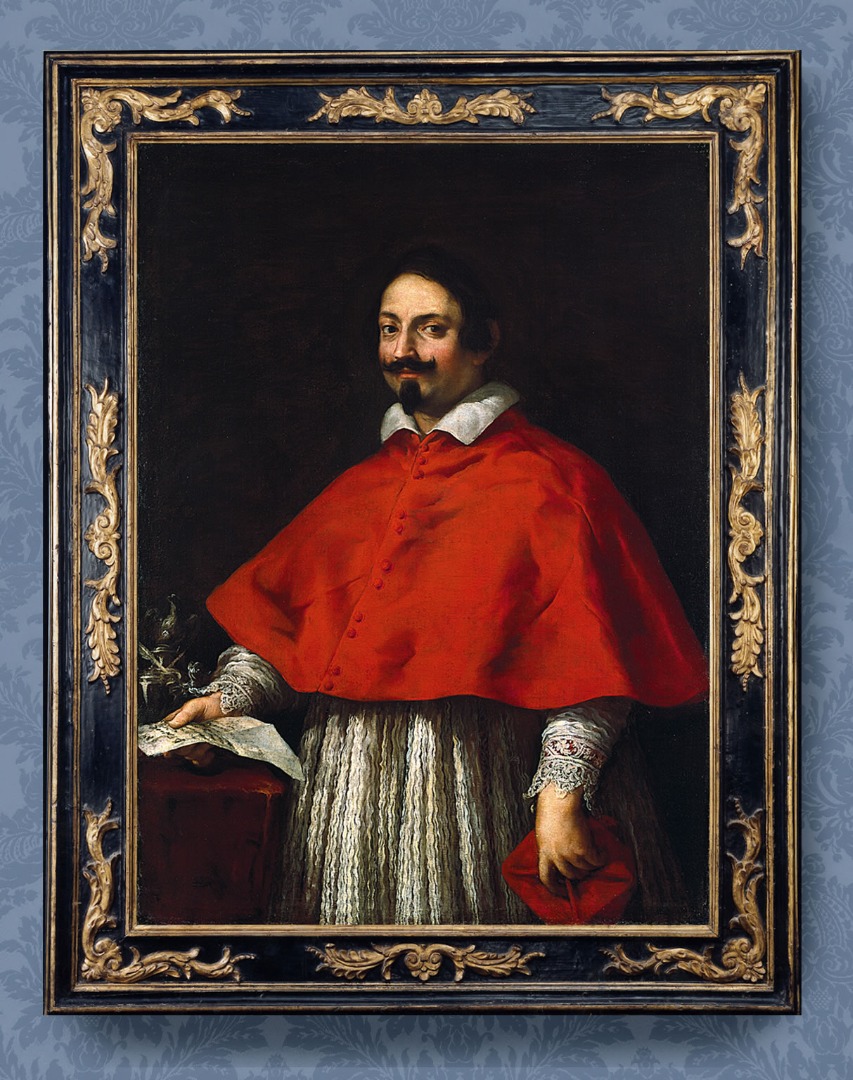
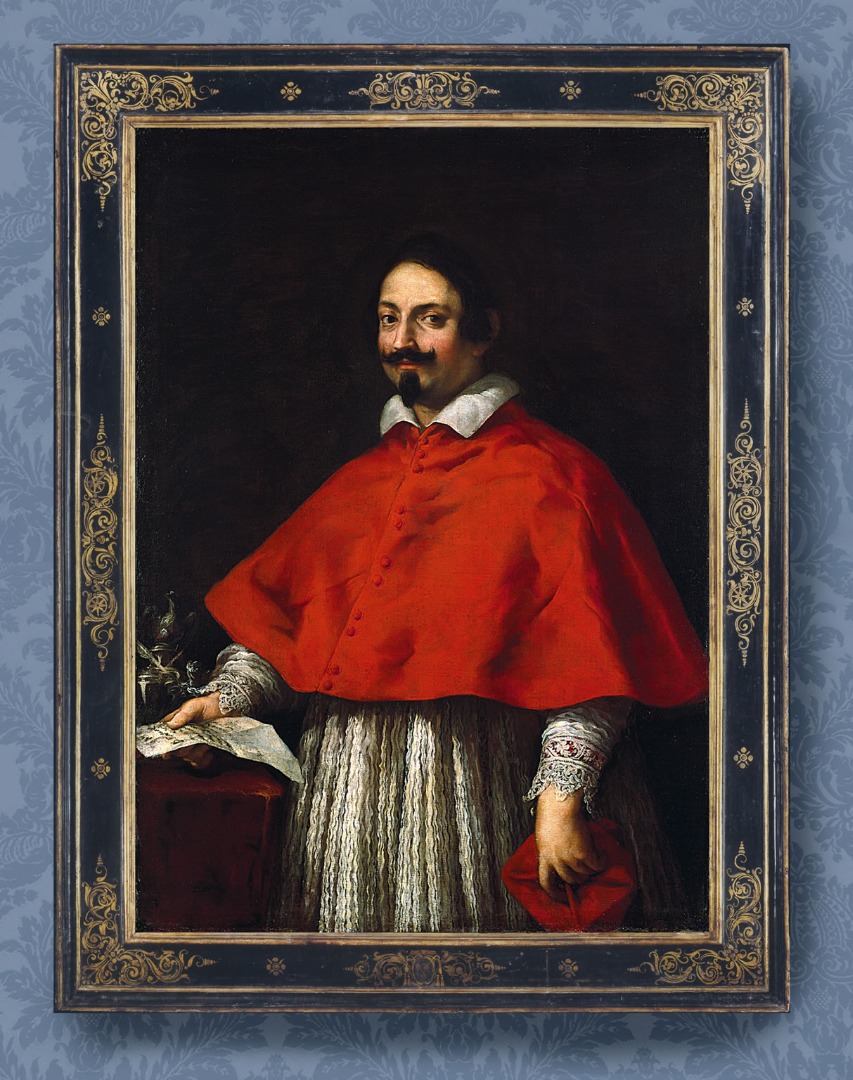
The two frames finished in black and gold create a stronger contrast, which picks up and reflects perhaps more accurately the restrained drama in this very charismatic portrait. The frame at the top has carved corner-&-centre ornaments of undulating leaves, and the lower frame has scrolling foliate corners, top centres and lateral centres holding symbolic stars, interspersed with tiny rosettes, all executed in sgraffito (that is, scratched through the layer of black paint to reveal the gold leaf below).
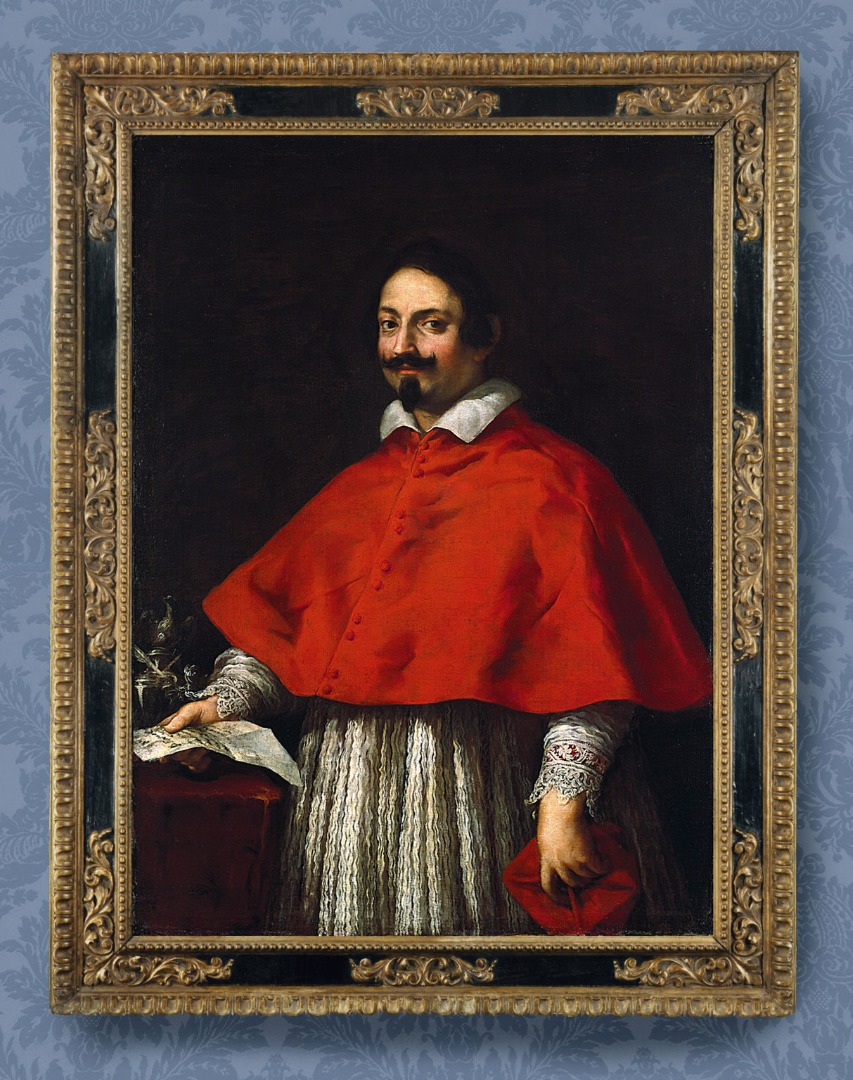
In the end, the choice fell on a fifth frame; another 17th century cassetta where the opposition of black and gold reflects the swathes of contrasting tone and colour in the painting. The scrolling leafy corners and centres echo the leaves and scrolls of the deep lace cuffs the cardinal wears, and at the same time their rhythmic curves and plasticity catch the light, providing a soft flicker of animation around the image. This frame is bolder, with more sculptural ornament, capturing the three-dimensional aspect of the Baroque; but these elements are still held in check by the containing lines of the structure – just as the sense of vivid life emanating from the portrait is contained by the static pose. Cortona’s cardinal is restored to full authority and power by this contemporary Italian frame and there may be many more paintings in museums and galleries throughout the world in need of similar regeneration.
